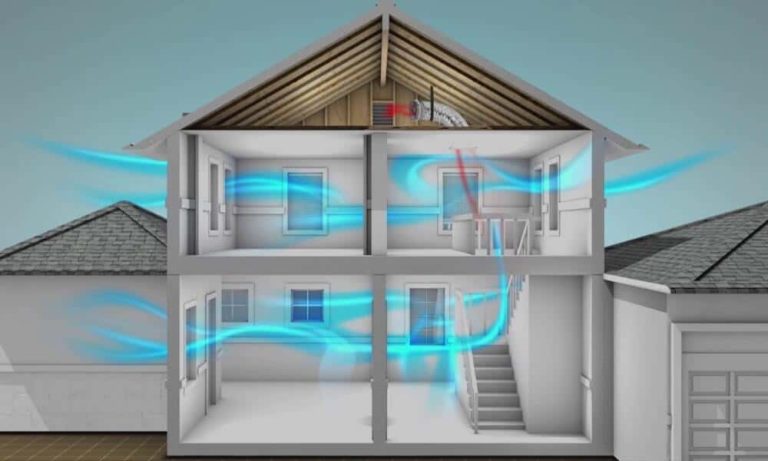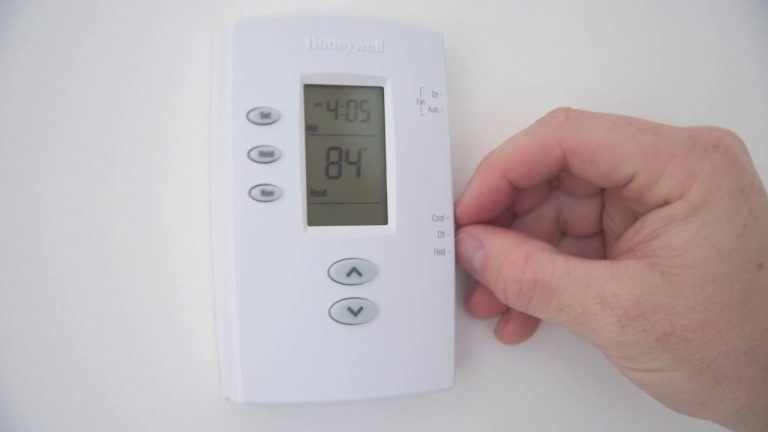Why Is My Rear Ac Not Working? Troubleshooting Tips And Solutions
There could be several reasons why your rear AC is not working. Some possible causes include a malfunctioning compressor, a refrigerant leak, a faulty blower motor, or a broken control panel. It’s best to consult a professional mechanic to diagnose and fix the issue accurately.
Imagine driving on a sweltering summer day, your air conditioning blasting, keeping you cool and comfortable. But suddenly, you notice that despite the refreshing breeze from the front, something is amiss.
The air from the rear vents feels warmer, or worse, nonexistent. Frustration sets in as you wonder, “Why is my rear AC not working?” For car owners or drivers experiencing issues with their rear air conditioning system, this problem is all too common.
Whether it’s a lack of cool air flow, unusual noises, or complete failure of the rear AC system, it can disrupt your driving experience and leave you sweating. But fear not, because in this article, we will delve into the troubleshooting tips and solutions that can help you resolve this pesky issue. With a basic knowledge level and a desire to fix the problem yourself, you’ll find practical solutions to get your rear AC back in top shape.
So buckle up and join us as we explore the reasons behind a malfunctioning rear AC and equip you with the tools to solve it. The cool comfort of a fully functional rear air conditioning system awaits you.
Common Causes of Rear AC Not Working
Lack of Refrigerant
One of the most common causes of a rear AC not working is a lack of refrigerant. Refrigerant is the substance responsible for cooling the air in your air conditioning system. When the refrigerant level is low, the AC system cannot produce cool air effectively.
Signs of low refrigerant level:
- Weak or warm airflow from the rear vents
- A noticeable decrease in cooling performance
- Unusual hissing or bubbling sounds from the AC system
- Ice buildup on the evaporator coil
Possible causes of refrigerant loss:
- Leak in the AC system
- Damaged or worn-out AC hoses
- Failed AC compressor
Electrical Issues
Another common culprit behind a malfunctioning rear AC is electrical issues. Problems with the electrical components of the AC system can prevent proper functionality.
Blower motor not functioning:
The blower motor is responsible for circulating the cool air from the AC system into the rear vents. If the blower motor is faulty or not working at all, it can lead to a lack of airflow from the rear vents.
Faulty temperature control panel:
The temperature control panel allows you to adjust the temperature settings for the rear AC. If the panel is damaged or not functioning correctly, it can affect the cooling performance of the rear AC.
Blocked Airflow
Blocked airflow is another common issue that can prevent the rear AC from working effectively. When the airflow is obstructed, cool air cannot flow freely into the rear vents, resulting in poor cooling performance.
Obstructions in the vents:
Dirt, debris, or objects lodged in the vents can restrict airflow and hinder the cooling process. Regularly inspect and clean the vents to ensure unobstructed airflow.
Blocked or clogged air filters:
Air filters prevent dust, pollen, and other particles from entering the AC system. Over time, these filters can become dirty or clogged, impeding airflow. Cleaning or replacing the air filters can help restore proper airflow to the rear AC.
Troubleshooting Steps for Rear AC Not Working
Checking Refrigerant Level
To address a lack of refrigerant, you can start by checking the refrigerant level in your AC system. Here are the steps:
Using a pressure gauge:
- Locate the low-pressure port on your AC system.
- Attach the pressure gauge to the port.
- Read the pressure level indicated on the gauge. It should fall within the recommended range.
Recharging the system if necessary:
If the refrigerant level is low, you may need to recharge the system. Consult your vehicle’s manual or seek professional assistance to ensure proper refrigerant recharge.
Inspecting Electrical Components
To troubleshoot electrical issues, follow these steps:
Testing the blower motor:
- Locate the blower motor in your vehicle.
- Disconnect the electrical connector from the motor.
- Using a multimeter, test the motor for continuity and proper voltage.
- If the motor fails these tests, it may need to be replaced.
Examining fuses and relays:
Check the fuses and relays related to the AC system. A blown fuse or faulty relay can disrupt the electrical flow and prevent the rear AC from working. Replace any damaged components as necessary.
Clearing Airflow Obstructions
If blocked airflow is the issue, consider the following steps:
Removing debris from vents:
Inspect the vents for any visible debris or obstructions. Use a vacuum cleaner or a soft brush to remove any dirt or objects that may be blocking the airflow.
Cleaning or replacing air filters:
Locate the air filters in your AC system. If they are dirty or clogged, clean or replace them according to the manufacturer’s instructions.
Professional Diagnosis and Repair
Seeking expert advice:
If you are unable to identify or fix the issue with your rear AC, it is recommended to seek professional advice. An experienced technician can diagnose the problem accurately.
Diagnostic tests performed by technicians:
Technicians may perform various diagnostic tests to pinpoint the exact cause of the rear AC problem. These tests may include refrigerant pressure checks, electrical system assessments, and airflow measurements.
Repair options and cost considerations:
Once the issue has been diagnosed, the technician will recommend repair options and provide an estimate of the cost involved. It’s important to consider the potential costs and benefits before proceeding with the repairs.
Preventive Maintenance for Rear AC
Regular servicing and inspections:
To prevent rear AC issues in the future, it’s essential to schedule regular servicing and inspections for your vehicle’s AC system. This can help detect and address any potential problems before they escalate.
Cleaning and replacing air filters:
As mentioned earlier, clean or replace the air filters regularly to ensure optimal airflow and cooling performance. This simple maintenance task can go a long way in avoiding AC problems.
Proper usage and care guidelines:
Follow the manufacturer’s guidelines for proper usage and care of your vehicle’s AC system. Avoid overworking the system and ensure that all passengers are aware of how to use the rear AC responsibly.
Experiencing a malfunctioning rear AC can be frustrating, but with the troubleshooting tips and solutions provided in this article, you are now equipped to resolve the issue. By understanding the common causes, performing necessary checks, and seeking professional help when needed, you can enjoy the cool comfort of a fully functional rear air conditioning system.
Diagnosing rear A/C problems
Why is my rear AC not working?
How can I troubleshoot my rear AC?
Can a low refrigerant level cause the rear AC to stop working?
What should I do if the rear AC blows warm air?
Why does the rear AC smell bad?
Conclusion: Troubleshooting Tips and Solutions for a Rear AC Not Working
In conclusion, a rear AC not working can be caused by several factors, including a lack of refrigerant, electrical issues, and blocked airflow. Low refrigerant levels, which can result from a leak or damaged components, can lead to weak or warm airflow and decreased cooling performance.
Electrical problems, such as a faulty blower motor or a damaged temperature control panel, can also affect the functionality of the rear AC. Additionally, if the airflow is obstructed by debris in the vents or clogged air filters, the cooling performance will be compromised.
To troubleshoot these issues, you can start by checking the refrigerant level using a pressure gauge and recharging the system if necessary. Testing the blower motor and examining fuses and relays can help identify and resolve electrical problems. Clearing debris from the vents and cleaning or replacing air filters can improve airflow.
If you are unable to fix the issue, it is recommended to seek professional advice and diagnostic tests from an experienced technician. Preventive maintenance, such as regular servicing and inspections, cleaning and replacing air filters, and following proper usage and care guidelines, is crucial to avoid future rear AC problems. By understanding the common causes of a rear AC not working and following the troubleshooting tips and solutions provided, you can address the issue and enjoy the cool comfort of a fully functional rear air conditioning system.






